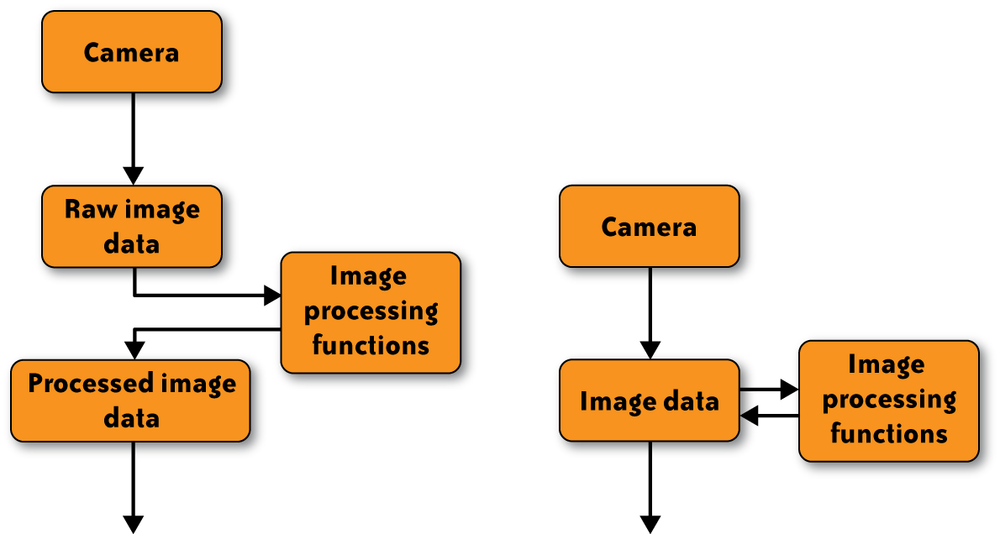Getting the Picture: Image Download and Processing
A lot went on between the time an image exposure occurred and the eventual hand-off to the ICS. Each camera in the system had its own control electronics to process commands, convert the analog signals from a CCD into 12-bit digital values, and then store the data in a hardware buffer until the flight software could download it into an image slot. All this occurred under the control of logic embedded in radiation-hardened programmable gate array devices.
Once an image was acquired from a camera and written into an image slot, it was subjected to various forms of processing, all of which occurred in-place within the confines of an image slot. No additional large (image-sized) buffers were used for the processing or the results thereof, and only a few small buffers were necessary to hold intermediate results. The use of in-place processing was a key factor in the design of the imaging software, and allowed the three tasks to maintain a small memory footprint in the overall system. Figure 3-9 shows a comparison between a multiple-buffer approach and the single buffer (i.e., slot) in-place design used for the Phoenix imaging flight software.

Figure 3-9. Multiple data buffers versus a single data buffer.
This was another design trade-off that was made early on in order to meet the image processing requirements and still stay within the amount ...
Get Beautiful Data now with the O’Reilly learning platform.
O’Reilly members experience books, live events, courses curated by job role, and more from O’Reilly and nearly 200 top publishers.

